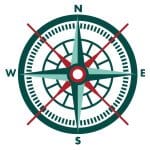DISCLAIMER: CoC (Continuum of Care) is an alternative term for LTSS (Long Term Services and Support). Please note that not all instances of LTSS have been transitioned to the new designation.

Program of All-Inclusive Care for the Elderly (PACE) is a type of HCBS that provides medical services and supports everyday living needs for certain elderly individuals, most of whom are eligible for benefits under both Medicare and Medicaid. These services are provided by an interdisciplinary team of professionals. For example, a primary care physician, nurse, social worker, physical therapist, and dietitian are a few of the necessary members.
PACE is:
- Permanently available to beneficiaries under Medicare
- Provided to Medicaid beneficiaries if the state chooses to provide PACE as a Medicaid benefit
Eligibility
Recipients must be age 55 or older, live in an area served by a PACE program, and be certified as eligible for a nursing home level of care by a state Medicaid agency or other contracted agency.
Financing
Medicare and Medicaid reimburse PACE programs for services provided to elders who are eligible for both benefits. This national model of care is permanently available through Medicare. People who are eligible for Medicare but not Medicaid make monthly payments.
The program receives capitated reimbursements (meaning the reimbursement rate is based on the number of eligible people in the service area) each month from Medicare and Medicaid for each patient the program serves. There are several things to consider about capitated rates:
- Capitated rates can benefit a program with a larger client base because unused funds can be kept for future use.
- A challenge of capitated rates is that serving high-expense or catastrophic cases may mean that all of the funding gets used much earlier than intended.
Benefits and Challenges of the PACE Model
Benefits
- Varied team of healthcare providers and trained assistants with different specialties
- Multiple services available, such as:
- Primary care, rehabilitation, adult daycare, home health, respite services, caregiver training, transportation, etc.
Challenges
- Need to hire team members with a wide variety of skills and qualifications
- Need a steady workforce
- Need a large enough patient population to be financially possible
- Must serve all beneficiaries in the service area who choose to enroll (including non-tribal members)
Resources
Available resources include information on locating a PACE program, learning more about PACE, finding out about getting medical transportation, and support for family caregivers.
